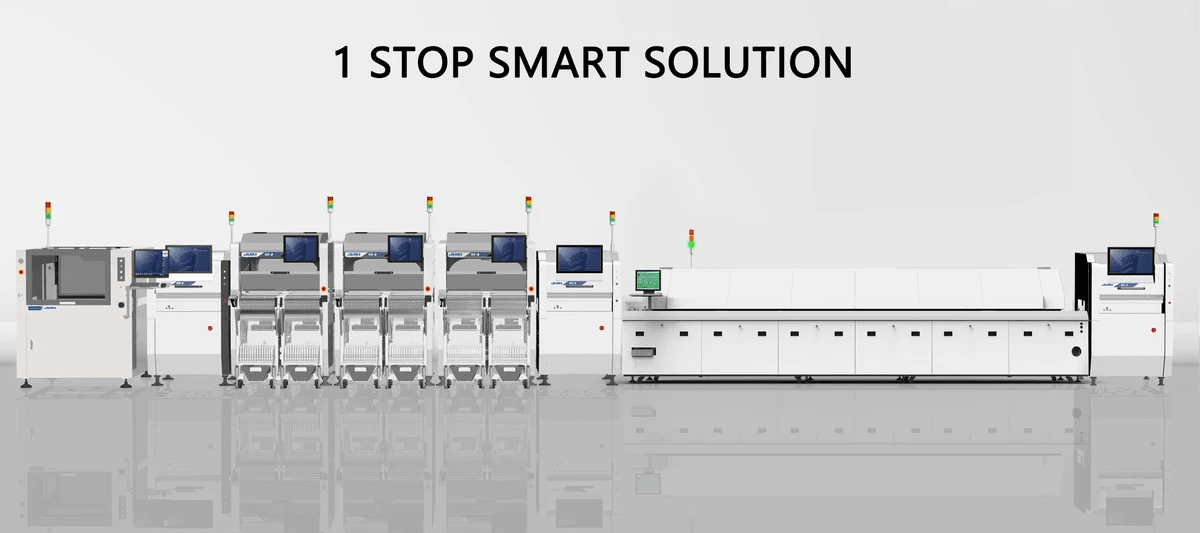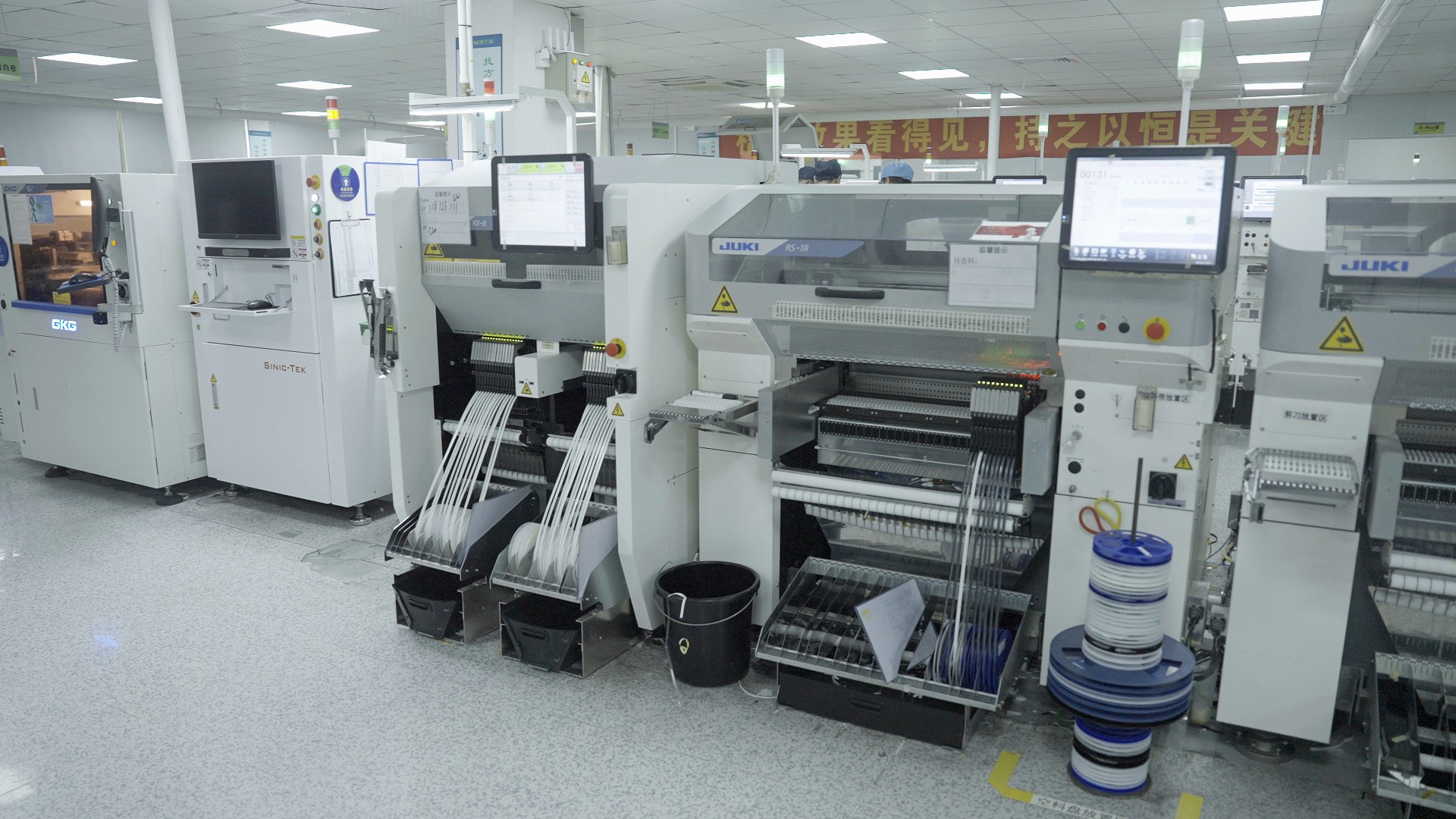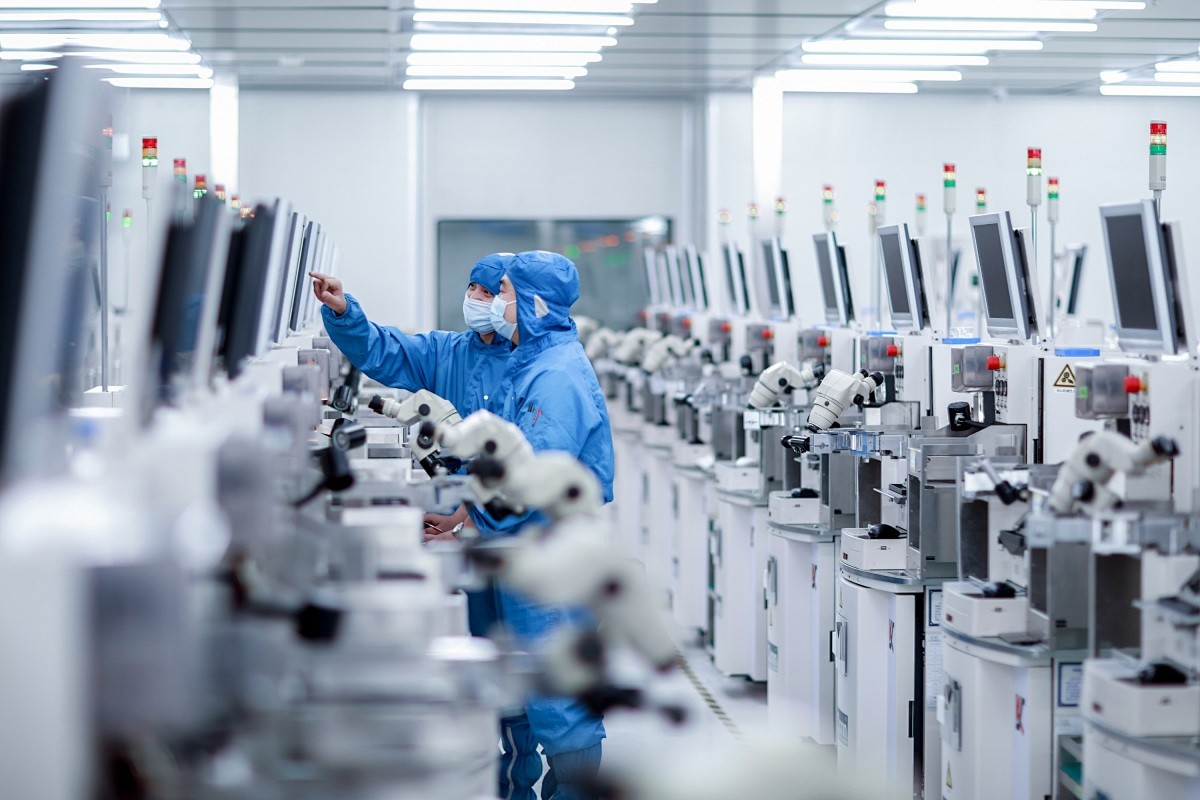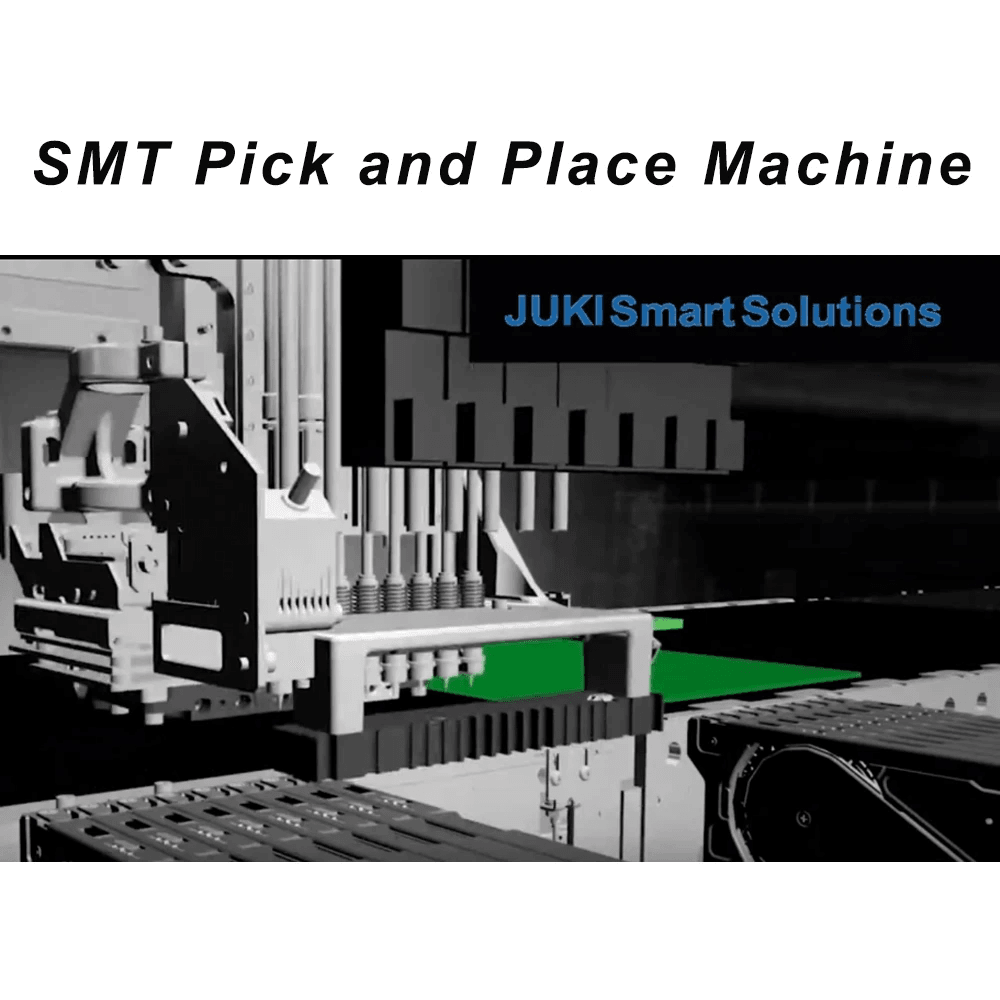Introduction
In the fast-paced world of electronics, efficiency and precision are paramount. Enter the pick and place PCB machine, a game-changer in the realm of circuit card assembly. This sophisticated equipment is designed to automate the placement of electronic components on a printed circuit assembly (PCA), ensuring that every surface mount device (SMD) is perfectly positioned on the PCB assembly board.
Understanding Pick and Place Machines
A pick and place machine operates by utilizing advanced robotics to handle tiny electronic components with remarkable accuracy. These machines are integral to modern manufacturing processes, making them essential for assembling complex electronic devices efficiently. With capabilities that range from high-speed operation to intricate placement, understanding how these machines function is crucial for anyone involved in electronic production.
Importance in PCB Assembly
The significance of pick and place machines in PCB assembly cannot be overstated; they dramatically enhance production rates while minimizing human error. As the demand for smaller and more complex circuit boards grows, so does the reliance on these machines to meet industry standards. By automating component placement, manufacturers can focus on innovation rather than repetitive tasks, ultimately leading to better-quality electronic devices.
Key Features to Consider
When selecting a pick and place PCB machine, several key features should be at the forefront of your decision-making process. Speed and efficiency are critical; you want a machine that can keep up with your production needs without sacrificing quality or precision. Additionally, flexibility is vital—your chosen machine should accommodate various electronic components to adapt as technology evolves within the circuit board landscape.
What is a Pick and Place Machine?

A pick and place machine is an essential tool in the realm of printed circuit assembly, designed to automate the placement of electronic components onto a circuit board. This sophisticated equipment enhances efficiency, accuracy, and speed in the manufacturing process, making it a game-changer for those involved in circuit card assembly. With its ability to handle various surface mount devices (SMDs), a pick and place PCB machine streamlines production lines while ensuring high-quality outcomes.
Definition and Functionality
At its core, a pick and place PCB machine is engineered to pick up electronic components from their packaging and accurately place them onto designated spots on a PCB assembly board. This functionality minimizes human error while maximizing throughput, allowing manufacturers to produce large quantities of circuit boards with consistency. The machine utilizes advanced vision systems and software algorithms to ensure precise placement of each component, which is crucial for the performance of electronic devices.
Role in Circuit Card Assembly
In the world of circuit card assembly, the role of a pick and place PCB machine cannot be overstated; it essentially acts as the backbone of modern electronics manufacturing. By automating the placement process, these machines reduce labor costs and increase production rates—perfect for meeting high demand in industries that rely on efficient PCB assembly. Additionally, their ability to handle complex designs means that even intricate arrangements of electronic components can be managed with ease.
Components of a Pick and Place PCB Machine
A typical pick and place machine consists of several key components that work together harmoniously to ensure optimal performance during printed circuit assembly. These include feeders that hold various electronic components ready for pickup, robotic arms equipped with suction cups or grippers for precise handling, and vision systems that guide accurate placements on the circuit board. Each component plays a vital role in ensuring that every surface mount device is placed correctly on the PCB assembly board without any hiccups along the way.
Essential Features of a Pick and Place PCB Machine

When it comes to optimizing your circuit card assembly process, the right pick and place PCB machine can make all the difference. These machines are engineered to enhance speed, precision, and flexibility, ensuring that your printed circuit assembly runs smoothly while accommodating various electronic components. Let's delve into these essential features that can elevate your PCB assembly board production.
Speed and Efficiency
In the fast-paced world of electronics manufacturing, speed is king. A high-performance pick and place PCB machine can significantly reduce cycle times, allowing for rapid placement of surface mount devices on circuit boards. This efficiency not only boosts production rates but also minimizes labor costs, making it a wise investment for businesses looking to scale their operations.
Moreover, modern machines are designed with advanced automation technologies that streamline the entire process from component feeding to placement. This means less downtime and more output per hour—a crucial factor when you’re aiming to meet tight deadlines or high-volume orders in printed circuit assembly. With an efficient pick and place machine at your disposal, you can keep up with demand while maintaining quality standards.
Precision in Placement
Precision is paramount when dealing with tiny electronic components on a PCB assembly board; even a slight misalignment can lead to costly errors or device malfunctions. A reliable pick and place PCB machine employs sophisticated vision systems that ensure each component is placed accurately within microns of its designated spot on the circuit board. This level of precision not only enhances product quality but also reduces rework rates—saving time and resources.
Additionally, many advanced models come equipped with programmable settings that allow operators to fine-tune placement parameters based on specific requirements for different electronic devices or surface mount devices. This adaptability ensures every job is executed flawlessly without compromising speed or efficiency. In an industry where precision defines success, investing in a high-accuracy pick and place machine pays off handsomely.
Flexibility for Various Electronic Components
The landscape of electronic components is ever-evolving; thus, flexibility in your manufacturing processes is essential for staying competitive in printed circuit assembly. A versatile pick and place PCB machine can handle a diverse range of components—from tiny resistors to larger capacitors—without missing a beat. This capability allows manufacturers to adapt quickly to changing market demands or new product designs without needing extensive reconfiguration.
Moreover, some machines offer interchangeable heads or tooling options that enable quick adjustments between different types of assemblies—making them ideal for both low-volume custom jobs as well as high-volume production runs on various circuit boards. The ability to swiftly switch between different surface mount devices ensures you’re always ready for whatever comes next in the world of electronics manufacturing.
Evaluating Your Production Needs

When it comes to selecting the right pick and place PCB machine, it's crucial to evaluate your production needs carefully. The efficiency of your circuit card assembly process hinges on understanding both the volume of production and the complexity of the projects at hand. By assessing these factors, you can ensure that your chosen machine aligns perfectly with your operational requirements.
Assessing Volume and Complexity
The first step in evaluating your production needs is to assess the volume of printed circuit assembly you anticipate. Are you producing small batches for prototypes or large volumes for mass production? Additionally, consider the complexity of the electronic components involved; intricate designs may require a more advanced pick and place PCB machine that can handle various surface mount devices (SMDs) efficiently.
Understanding both volume and complexity will help you determine not just what features you need but also how robust your equipment should be. For example, high-volume runs may benefit from machines that offer rapid placement speeds without sacrificing precision. Conversely, if you're working with a diverse array of electronic devices, flexibility in handling different component types becomes paramount.
Choosing Between Features
Once you've assessed volume and complexity, it's time to dive into feature selection for your pick and place PCB machine. Different machines come equipped with various capabilities designed to enhance performance during circuit board assembly operations. Consider whether you need advanced vision systems for precise component placement or automated feeders for quick changes between different electronic components.
Moreover, think about how much automation versus manual intervention suits your workflow best. While some manufacturers might prefer fully automated solutions for speed, others may find value in semi-automated systems that allow greater control over placement accuracy during printed circuit assembly tasks. Balancing these features against your specific needs will lead to a more tailored solution.
Long-Term vs Short-Term Needs
Finally, when evaluating your production needs, consider whether you're looking at long-term sustainability or short-term gains with your investment in a pick and place PCB machine. If you're planning on scaling up operations in the future or diversifying product lines, investing in a versatile machine now could save you money down the road. On the other hand, if current demand is uncertain or fluctuating significantly, it might be wise to opt for a more budget-friendly model until stability returns.
Additionally, factor in potential upgrades as technology evolves within printed circuit assembly processes; choosing a modular system could allow you to adapt easily without needing an entirely new setup later on. Ultimately, aligning your purchase decision with both immediate requirements and future aspirations will ensure that you're well-equipped for whatever challenges come next in electronic device manufacturing.
Leading Brands and Models

When it comes to selecting a pick and place PCB machine, the market is brimming with options, but a few brands have truly distinguished themselves in the realm of circuit card assembly. Among these, Yamaha and Juki stand out for their innovative technologies and reliable performance. Understanding what each brand offers can help you make an informed decision that aligns with your production needs.
Yamaha YSM Series Machines
The Yamaha YSM series machines are renowned for their exceptional speed and precision in printed circuit assembly. These machines are designed to handle a variety of electronic components, including surface mount devices (SMDs), making them versatile for different production requirements. With advanced features like intelligent programming and real-time monitoring, the YSM series ensures that every component is placed accurately on the PCB assembly board.
Yamaha has integrated cutting-edge technology into its pick and place PCB machine lineup, enabling manufacturers to improve throughput without compromising quality. Their machines boast impressive placement rates while maintaining tight tolerances—an essential factor for modern electronic devices that demand high reliability. Moreover, their user-friendly interface allows operators to easily adapt to changing production needs, ensuring maximum efficiency in circuit board production.
Investing in a Yamaha YSM series machine not only enhances your current capabilities but also prepares your operation for future demands in the ever-evolving electronics market. With an emphasis on innovation and performance, these machines are well-suited for businesses aiming to stay ahead of the competition in printed circuit assembly.
Juki and Its Innovative Offerings
Juki has made significant strides in the field of pick and place PCB machines with its innovative offerings tailored for high-volume manufacturing environments. Known for their durability and reliability, Juki machines excel at handling complex circuit card assembly tasks efficiently. Their models feature advanced vision systems that ensure precise placement of even the smallest electronic components on various types of PCBs.
What sets Juki apart is its commitment to continuous improvement through technology integration; this means their pick and place solutions are constantly evolving to meet industry demands. From flexible configurations that accommodate diverse surface mount device sizes to software enhancements that streamline workflow processes, Juki’s offerings cater to manufacturers looking for versatility without sacrificing performance. This adaptability makes them ideal candidates for any business focused on optimizing printed circuit assembly operations.
Furthermore, Juki emphasizes total cost of ownership by designing machines that require minimal maintenance while delivering high output rates over extended periods. For companies seeking reliable partners in their manufacturing journey, investing in a Juki pick and place PCB machine may be one of the best decisions they can make—ensuring both quality output and operational efficiency as they navigate today’s competitive landscape.
Cost Considerations for Your Purchase

When investing in a pick and place PCB machine, understanding the financial implications is crucial. The initial purchase price is just the tip of the iceberg; you need to consider ongoing costs related to maintenance, operation, and potential upgrades. By taking a comprehensive view of your budget, you can ensure that your investment in circuit card assembly yields long-term benefits.
Budgeting for a Quality Machine
Budgeting for a quality pick and place PCB machine involves more than just looking at the sticker price. It's essential to evaluate the specifications that align with your production needs, especially if you're working with various electronic components or complex printed circuit assemblies. Remember, investing in a reliable machine often translates to fewer breakdowns and enhanced efficiency during high-volume runs.
Quality machines may come with higher upfront costs but can significantly reduce operational expenses over time. If you're planning on producing surface mount devices or intricate circuit boards, allocating funds for advanced features like precision placement and speed can pay off handsomely. Ultimately, consider both current needs and future scalability when setting your budget.
Total Cost of Ownership
The total cost of ownership (TCO) for a pick and place PCB machine encompasses all expenses from acquisition through its lifetime. This includes not only the initial purchase price but also maintenance costs, training for operators, and any necessary software updates or upgrades over time. Understanding TCO helps businesses make informed decisions about what type of equipment will provide the best return on investment.
In addition to direct costs, think about how downtime due to equipment failure could impact your production schedule and bottom line. A reliable pick and place PCB machine can minimize these disruptions by ensuring smooth operation during circuit card assembly processes. Therefore, while it might be tempting to opt for cheaper models initially, they could lead to higher TCO due to frequent repairs or inefficiencies.
Financing Options for PCB Assembly
Financing options can play a pivotal role in acquiring a high-quality pick and place PCB machine without straining your budget too much upfront. Many manufacturers offer leasing programs or financing plans that allow businesses to spread payments over time while still enjoying immediate access to state-of-the-art technology needed for printed circuit assembly tasks. This approach helps manage cash flow effectively while ensuring you’re not compromising on machinery quality.
Additionally, explore grants or funding programs aimed at supporting manufacturers in adopting advanced technologies within their operations—these resources may help offset some initial costs associated with purchasing new equipment like electronic devices used in assembly lines today. Also consider collaborating with financial institutions that specialize in manufacturing loans tailored specifically for such investments.
In summary, careful consideration of budgeting strategies, total cost of ownership calculations, and available financing options will empower you as you navigate the purchase process of your pick and place PCB machine—ultimately leading to smarter decisions that enhance productivity without breaking the bank.
Conclusion

In the fast-paced world of electronics manufacturing, selecting the right pick and place PCB machine can significantly enhance your production efficiency. These machines are pivotal in circuit card assembly, ensuring that electronic components are placed accurately and swiftly on the PCB assembly board. By investing in a quality machine tailored to your needs, you can optimize your workflow and keep pace with industry demands.
Maximizing Efficiency with the Right Machine
Choosing a pick and place PCB machine that aligns with your production goals is essential for maximizing efficiency. A well-suited machine not only speeds up the placement of surface mount devices but also minimizes errors during printed circuit assembly. This ensures that your electronic devices function reliably, ultimately boosting customer satisfaction and reducing costs associated with rework.
The Future of PCB Assembly Equipment
The landscape of PCB assembly equipment is evolving rapidly, driven by advancements in technology and increasing complexity in electronic devices. Future pick and place PCB machines will likely feature enhanced automation capabilities, smarter software integration, and improved adaptability for various types of circuit board designs. As manufacturers strive for greater precision and efficiency, keeping an eye on these trends will be critical for staying competitive.
Key Takeaways for Selecting Your Machine
When selecting a pick and place PCB machine, consider factors such as speed, precision, flexibility, and cost-effectiveness to meet your specific production needs. Assessing both long-term goals and short-term requirements will help you make an informed decision that balances performance with budget constraints. Remember that investing in the right equipment today sets the foundation for successful printed circuit assembly tomorrow.
